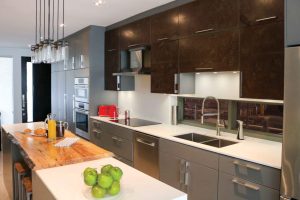
- Quality materials ensure outdoor areas stand up to harsh conditions and daily use
-
Balancing durability with style leads to spaces that remain functional and attractive
-
Paying attention to smaller components helps maintain safety and cohesion
-
Sustainable and consistent material choices deliver long-term value
When you think about outdoor living, it’s easy to focus on the design features that catch your eye first — a deck, a garden path, or maybe a striking front gate. Yet the materials chosen beneath the surface often shape how those spaces truly feel to use. If you’ve ever had a timber fence warp after a hot summer or noticed a paved area crumble sooner than expected, you already know how much the wrong material can undermine the look and function of an outdoor setting. Quality choices don’t just hold everything together; they influence whether your outdoor space will feel inviting for years or leave you dealing with ongoing frustrations.
Why Longevity Matters in Outdoor Spaces
Spending time outside is part of daily life in Australia, but it comes with a challenge: harsh conditions that test every surface, joint, and fixture. From heavy winter rain to scorching summer sun, the environment places far greater strain on outdoor areas than any indoor setting ever will.
Materials that can withstand this pressure mean fewer repairs, less fading, and fewer surprises when you step outside. Choosing durable stone, hardwoods, or weather-resistant metals is not simply a design preference; it’s about ensuring the space remains safe and appealing long after it’s finished. This is particularly important in coastal regions where salty air accelerates corrosion, or in inland areas where constant heat can split and weaken poorly treated timber. By prioritising longevity, you protect both the visual style and the functional value of your outdoor investment.
Balancing Style With Durability
The appeal of outdoor design often lies in its ability to blend practicality with beauty. You might be drawn to a sleek metal finish or a lightweight composite, but the question to ask is whether that choice will still look as good after years of sun exposure and everyday use. Some materials deliver an immediate wow factor but quickly fade, peel, or require expensive upkeep.
On the other hand, there are finishes and structural elements designed to age gracefully while retaining their strength. Consider natural stone that deepens in character over time, or high-quality treated timber that weathers without losing its integrity. These materials allow you to achieve a stylish look without sacrificing durability. Finding that balance ensures your space feels both inviting and reliable, instead of becoming a cycle of constant repair.
How Small Details Support the Whole Design
It’s tempting to think of outdoor design only in terms of the big pieces like paving, fencing, or decking, yet the smaller details often determine how well a space functions day to day. Hinges, locks, fasteners, and brackets might seem secondary, but they take the same environmental beating as the larger structures. When these elements fail, they compromise not only the look but also the safety of the entire area.
Take gate hardware as an example. A sturdy latch or rust-resistant hinge keeps access points secure and operating smoothly, while a poor-quality piece can quickly lead to sagging gates or frustrating repairs. The finish of these smaller parts also matters, because a corroded or mismatched fixture can stand out sharply against an otherwise polished design. By paying attention to these supporting details, you create a space where every component works in harmony, both visually and practically.
The Cost of Cutting Corners on Materials
Choosing cheaper materials might feel like a win in the short term, but the consequences tend to appear sooner than expected. Outdoor timber that hasn’t been adequately treated may split and warp within a season. Lower-grade metals can rust through after only a few years of exposure to moisture. Even paving laid with cost-saving shortcuts can loosen or crack under regular foot traffic.
The cost of repairing or replacing these elements adds up quickly, often surpassing what you would have spent on stronger materials at the outset. Beyond finances, there’s also the disruption of constant maintenance and the frustration of seeing a carefully designed space lose its appeal. By investing in better quality from the beginning, you reduce both long-term expenses and the stress of dealing with early failures. A well-built space should grow with you, not break down around you.
Sustainable Choices in Outdoor Design
Designing with sustainability in mind is becoming increasingly crucial for Australian homeowners. Beyond the immediate benefits of reducing environmental impact, sustainable materials often provide greater durability and performance. Recycled composites, for example, can withstand extreme conditions while offering the appearance of traditional timber. Locally sourced stone cuts down on transport emissions and supports regional industries, while also giving your outdoor area a unique, place-based character.
Sustainably harvested hardwoods provide both beauty and resilience, offering a natural feel without the drawbacks of untreated timber. These materials are not only kinder to the environment but also serve as wise long-term choices. They tend to require less frequent replacement, which reduces waste and saves money over time. In this way, sustainability and practicality often go hand in hand.
Creating Cohesion Across Outdoor Features
When each element of your outdoor space feels connected, the overall design gains a sense of purpose and harmony. Cohesion isn’t just about colour coordination; it’s about ensuring that the materials chosen for fencing, paving, furniture, and structural features share complementary qualities. A polished timber deck looks most at home alongside matching trims and fittings, while stone paving ties in naturally with similar-toned walling or planters.
This consistency extends beyond appearance to maintenance as well. Selecting materials with similar care requirements makes upkeep more straightforward and more predictable. When surfaces and structures age in unison rather than at different rates, the space continues to feel balanced and well-considered. Cohesion creates an outdoor environment that feels less like a collection of parts and more like a unified living space.
Conclusion
Outdoor spaces hold incredible potential to become places of comfort, relaxation, and style, but their success hinges on the materials that support them. When quality is given priority, the result is a space that endures environmental stress, demands less maintenance, and offers beauty that lasts well beyond the first season. Material choice is never just a technical detail; it is the foundation of an outdoor area that can grow with your lifestyle and remain enjoyable year after year.








